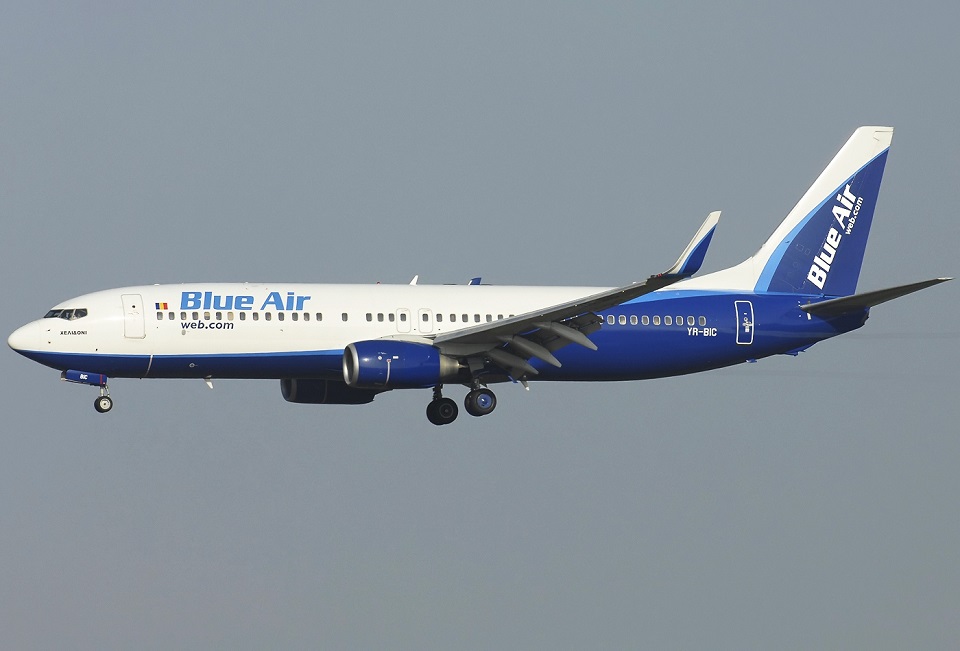Aerospace
Blue Air Boeing 737 seized by Romanian tax authority
Blue Air Boeing 737 seized by Romanian tax authority

For a few weeks, Blue Air’s flight operations have been on pause due to financial difficulties. The Boeing 737-500 with the licence plate YR-AME has now been seized by the Romanian tax authority.
The formal action was taken because the carrier is said to be significantly in arrears with the tax office and social security, according to the authorities. The YR-AME has now been taken in order to be able to bring this in.
Record Number Of Guns Seized At BWI Airport And 2022 Isnt Over(Opens in a new browser tab)
However, Blue Air believes that this is unaffected because this unit should no longer be in the fleet. This Boeing 737, along with other ex-Blue Air aircraft, was transferred to the Hello Jets AOC.
The low-cost airline claims that the new operator has filed an appeal against the official action. The affected medium-haul jet should be released as a result of this. Another Boeing 737-500 held by the carrier has been given to Hello Jets together with the YR-AMA. Since the beginning of October 2022, this aircraft has been parked in Forli, Italy.
Why Are Most Airplane Seats Blue?(Opens in a new browser tab)
In an effort to locate a strategic investor, the airline put a halt to flights at the beginning of September but failed to resume them in October. The company’s representatives stated that the investors had “approved all the requirements” on October 11. The agreement is subject to the state’s approval.
The state is presently repaying a EUR 60 million rescue loan provided to the corporation to aid in its recovery after the lockdown. With the majority of its fleet already returned to the leasing business, it is not much the Government can recover, or the investor sees value as an investment target.

Aerospace
Boeing Transfers Rocket Stage to NASA, Paving Way for Human Moon Mission

Boeing has achieved a significant milestone by providing NASA with the second core stage of the Space Launch System (SLS) rocket.
This crucial component, crafted at NASA’s Michoud Assembly Facility (MAF), is set to propel the Artemis II crew into lunar orbit, marking humanity’s return to deep space after a 50-year hiatus.
The monumental Boeing-built rocket stage, the largest element of the Artemis II mission, will embark on a journey aboard the Pegasus barge, traveling 900 miles to NASA’s Kennedy Space Center.
Comparison of two legendary aircraft B777x vs B747 aircraft:Click here
Upon arrival, it will be meticulously integrated with other essential Artemis II components, including the upper stage, solid rocket boosters, and NASA’s Orion spacecraft within the iconic Vehicle Assembly Building. This intricate integration process is a vital step toward the eagerly anticipated Artemis II launch, slated for 2025.
“Boeing-built products helped land humankind on the moon in 1969, and we’re proud to continue that legacy through the Artemis generation,” remarked Dave Dutcher, vice president and program manager for Boeing’s SLS program. “Together, with NASA and our industry partners and suppliers, we are building the world’s most capable rocket and paving the way to deep space through America’s rocket factory in New Orleans.”
NASA, Lockheed Martin Reveal X-59 Quiet Supersonic Aircraft:Click here
The delivery of Core Stage 2 marks a significant achievement in the evolution of the SLS rocket. Towering over 200 feet and powered by four RS-25 engines, this core stage, coupled with two solid-fueled booster rockets, will generate a staggering 8.8 million pounds of thrust. This immense power is crucial to launching Artemis II and future missions into the vast expanse of space.
The SLS rocket stands unparalleled in its capability to transport both crew and substantial cargo to the moon and beyond in a single launch. Its extraordinary capacity will facilitate the delivery of human-rated spacecraft, habitats, and scientific missions to destinations including the moon and Mars, ushering in a new era of space exploration.
-

 Travel1 week ago
Travel1 week agoAir India to Expand US Operations with Three New Routes After a Decade
-

 Travel2 weeks ago
Travel2 weeks agoWhy We Should Avoid These Stamps in a Passport
-

 Airlines1 month ago
Airlines1 month agoInvestigations Reveal Fake Chinese Titanium in Boeing and Airbus Jets
-

 Tech4 weeks ago
Tech4 weeks agoChina’s CATL Plans 1,800-Mile Electric Plane Launch by 2027
-

 Airport3 days ago
Airport3 days agoTop 10 Largest Airports in the World by Size
-

 Aerospace4 weeks ago
Aerospace4 weeks agoChina’s Fighter Jets Turn Wings into Autonomous Drones
-

 Airlines4 days ago
Airlines4 days agoAir India Rolls Out A350s for Delhi-New York JFK and Newark Routes
-

 Defence3 weeks ago
Defence3 weeks agoBoeing Enhances Chinook with New Engines and Block II Upgrades at $96 Million







